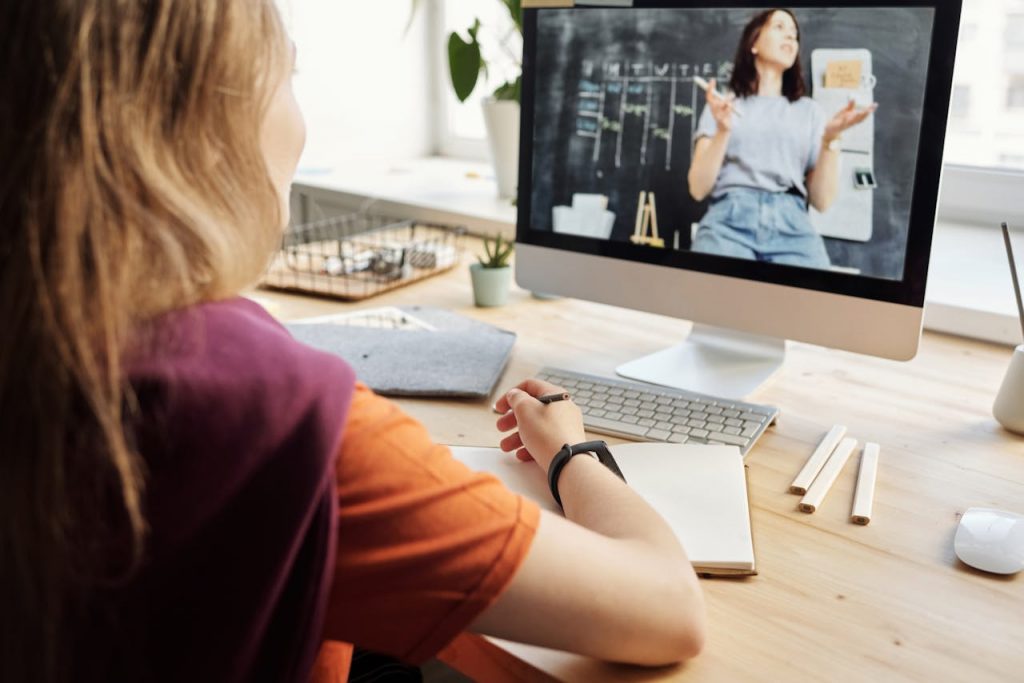Kathy Alameda
I’m an eLearning business expert, Influencer, and business advisor. I have also written several posts related to the eLearning niche which has attracted reade
The introduction of virtual technologies in online education has drastically transformed the virtual classroom experience for students. Regardless of their location, learners...

Image Credits: pexels
The introduction of virtual technologies in online education has drastically transformed the virtual classroom experience for students. Regardless of their location, learners can interact with instructors and peers through real-time and immersive experiences.
Similarly, businesses of all types can function without any interruptions through a simulated environment that uses virtual learning to create an incredible learning experience.
In this blog, let’s look into what a virtual classroom is and how to set up one.
A virtual classroom is an online learning environment where students and instructors participate in learning activities. Virtual classrooms feature a video conferencing tool, an online whiteboard, instant messaging tools, and a lot more. Or you could always use a full-fledged online tutoring software that offers all these features and functionalities.
Here are some of the benefits of setting up a virtual classroom
Learners can join a live class with just a smartphone and an internet connection which is great as it doesn’t require an elaborate setup to start your virtual classroom.
The need for a physical classroom setup, equipment, non-digital resources, etc., are eliminated in a virtual classroom. Both instructors and tutors can attend the classes from the comfort of their homes, eliminating the travel needs.
All of these significantly reduce the overall cost for both instructors and students without compromising the quality of education.
When you conduct online classes, learners from different parts of the world can access your sessions without any geographical restrictions. Virtual classrooms are advantageous in bringing together students from different parts of the world together in a single place.
One of the basic ways to deliver online classes is by creating slideshows with audio. Anyone can do this and doesn’t require any advanced technical expertise. However, the most engaging way is to deliver lessons through pre-recorded videos that students can access whenever needed. Along with that, you can choose to offer live classes by leveraging video conferencing tools to substitute the traditional classroom-like experience.
To start your virtual classroom, the most basic way, you just need a smartphone, a microphone, and an internet connection. But if you want to enjoy a more professional setup, invest in a high-quality camera and more equipment like multiple cameras with split-screen, etc.
You will need online tutoring software to create your own virtual classroom that allows you to host both live classes and self-paced online courses. Pinlearn is one such professional tutoring software which you can build a sophisticated online tutor marketplace just the way you want; with all the unique customization you need.
When creating a virtual classroom, make sure you plan your availability and notify your students beforehand. Communicate when you will be available, be clear about the timings, and always keep the time. You must also make sure to be flexible, especially during the pandemic where uncertainties are several.
Differences in students’ time zones from different parts of the world can be an issue if not taken care of properly. Unstable internet connection, technical failure, etc., are scenarios that can interrupt the flow of your classes.
Hence stay flexible to make necessary changes in the already made plan to respond to any situation by maintaining a professional attitude.
Educators also need to set expectations, goals, and routines in the virtual classroom setup. Establishing routines and goals will foster a productive learning environment and will encourage students to take ownership of their learning. In addition, you can create presentations or videos related to this to share in your virtual classroom.
For example, ask your students to ensure that the internet connection is stable, make sure the laptop is fully charged, be on time for the class, gestures to follow while the tutor is taking class, mute when others are speaking, etc.
Even when you are teaching online from the comfort of your home, it is important to create a dedicated space that is visually appealing and has the right tutoring environment free of distractions.
Creating a dedicated work area attractive to the student is important, as it helps both instructors and students to increase their productivity. Make sure the teaching environment you set up is welcoming and has your personal touch, making learners feel great about attending your online class.
Making small modifications from choosing a well-lit clutter-free room to streaming your classes live to adjust the cam to your eye level can make a big difference in how well your classes go.
When setting up your virtual classroom, the thumb rule is to establish an efficient communication channel between the instructors and learners. Besides video conferencing, integrate instant messaging in your classes so that students can interact with teachers and other students in case of doubts. You can also consider creating WhatsApp or Facebook groups exclusively for your students to facilitate communication beyond the class.
Building and setting up a virtual classroom is not an easy task, especially for tutors who are unfamiliar with online teaching. But being flexible with the usage of new technology and tools can bring teachers a step closer to making online classes more engaging for their students.
Suggested:
Launch Your Own Tutoring Website VS Teaching On An Existing One.
Sites That Provide Best Tutorials For Web Development.